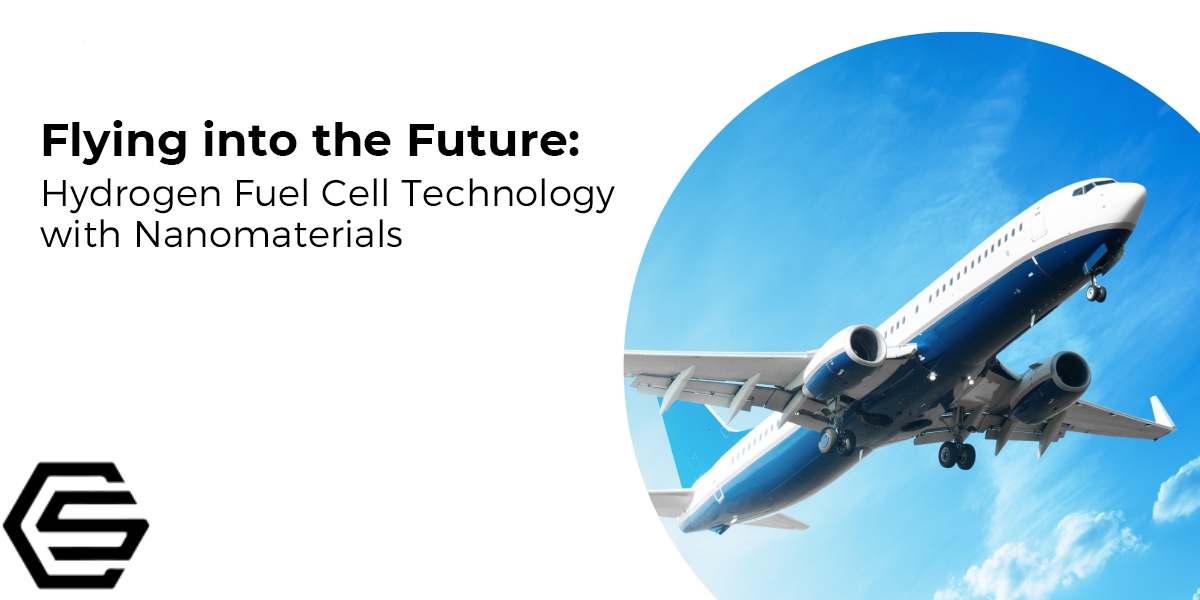Understanding Hydrogen Fuel Cells
Hydrogen fuel cells are electrochemical devices that generate electricity by combining hydrogen gas and oxygen from the air. At the anode, hydrogen is split into protons and electrons, with the latter flowing through an external circuit to create an electric current. The protons migrate through a membrane to the cathode, where they combine with electrons and oxygen to produce water vapor as the only byproduct. Fuel cells are highly efficient and emit no harmful pollutants, making them a clean and environmentally friendly energy source with diverse applications, including transportation and power generation.
Hydrogen as an aviation fuel presents several advantages, including reduced emissions, high energy density, fast refueling, long-range capabilities, reduced noise, and the potential for domestic production. However, it also faces significant challenges, such as the need for extensive infrastructure development, safety concerns, energy efficiency issues, high costs, limited range and payload, and the necessity for green hydrogen production. Overcoming these challenges is crucial to realizing the environmental and operational benefits of hydrogen in aviation. Its successful integration will depend on continued research, investment, and infrastructure development in the aviation industry.

Figure 1. Implementation of nanotechnology in fuel cells.
Nanomaterials: Exploring the Potential
Nanomaterials are playing a pivotal role in aerospace applications due to their exceptional properties and versatility. These materials offer benefits such as lightweight and strong composites, improved fuel efficiency, advanced propulsion systems, heat resistance, sensors and electronics, energy storage solutions, radiation protection, enhanced materials durability, and reduced ice formation. They are particularly valuable for space exploration, where they contribute to the development of spacecraft and equipment capable of withstanding extreme conditions. While nanomaterials offer numerous advantages, challenges related to manufacturing, safety, and regulation must be addressed to fully realize their potential in aerospace. Nevertheless, ongoing research and development in this field promise to transform the aerospace industry by creating more efficient, durable, and environmentally friendly aircraft and spacecraft.To get information about fuel cells development with nanotechnology, you can visit our blog post.
Nanomaterials offer a multitude of advantages for hydrogen fuel cells, revolutionizing fuel cell technology. These benefits include enhanced catalytic activity, improved durability, reduced precious metal usage, better mass transport, flexible design options, high surface area, improved fuel cell membranes, reduced overpotential, opportunities for miniaturization, and environmental sustainability. By harnessing these advantages, nanomaterials contribute to increased fuel cell efficiency, reduced costs, and the broader adoption of hydrogen as a clean and efficient energy source across various applications.
Hydrogen Fuel Cells with Nanomaterials
Nanomaterials offer a range of advantages for efficient hydrogen storage, addressing key challenges in utilizing hydrogen as a clean energy carrier. Their high surface area, improved absorption and desorption kinetics, tunable pore structures, and ability to facilitate hydrogen spillover enhance storage capacity and release kinetics. Nanomaterials also enable storage at lower temperatures, enhance safety, provide lightweight solutions, exhibit reversibility, and offer chemical stability. With diverse material options, nanomaterials hold significant promise for advancing hydrogen storage technology, although challenges like scalability and cost-effectiveness need to be addressed for widespread adoption. Continued research and development in this field will play a crucial role in realizing the potential of hydrogen as a sustainable energy source.
Nanocatalysts are essential in enhancing fuel cell performance through various mechanisms. Their high surface area, improved reaction kinetics, and precise engineering enable more efficient catalysis of critical electrochemical reactions in fuel cells. Nanocatalysts reduce the reliance on expensive precious metals, enhance durability, and resist poisoning and corrosion. They can be integrated into fuel cell components, expand compatibility with alternative fuels, and facilitate hydrogen spillover. These advantages collectively contribute to improved fuel cell efficiency, cost-effectiveness, and applicability across multiple sectors, including transportation, stationary power generation, and portable devices. Nanocatalysts are central to the advancement of fuel cell technology and its potential as a clean energy solution.



















